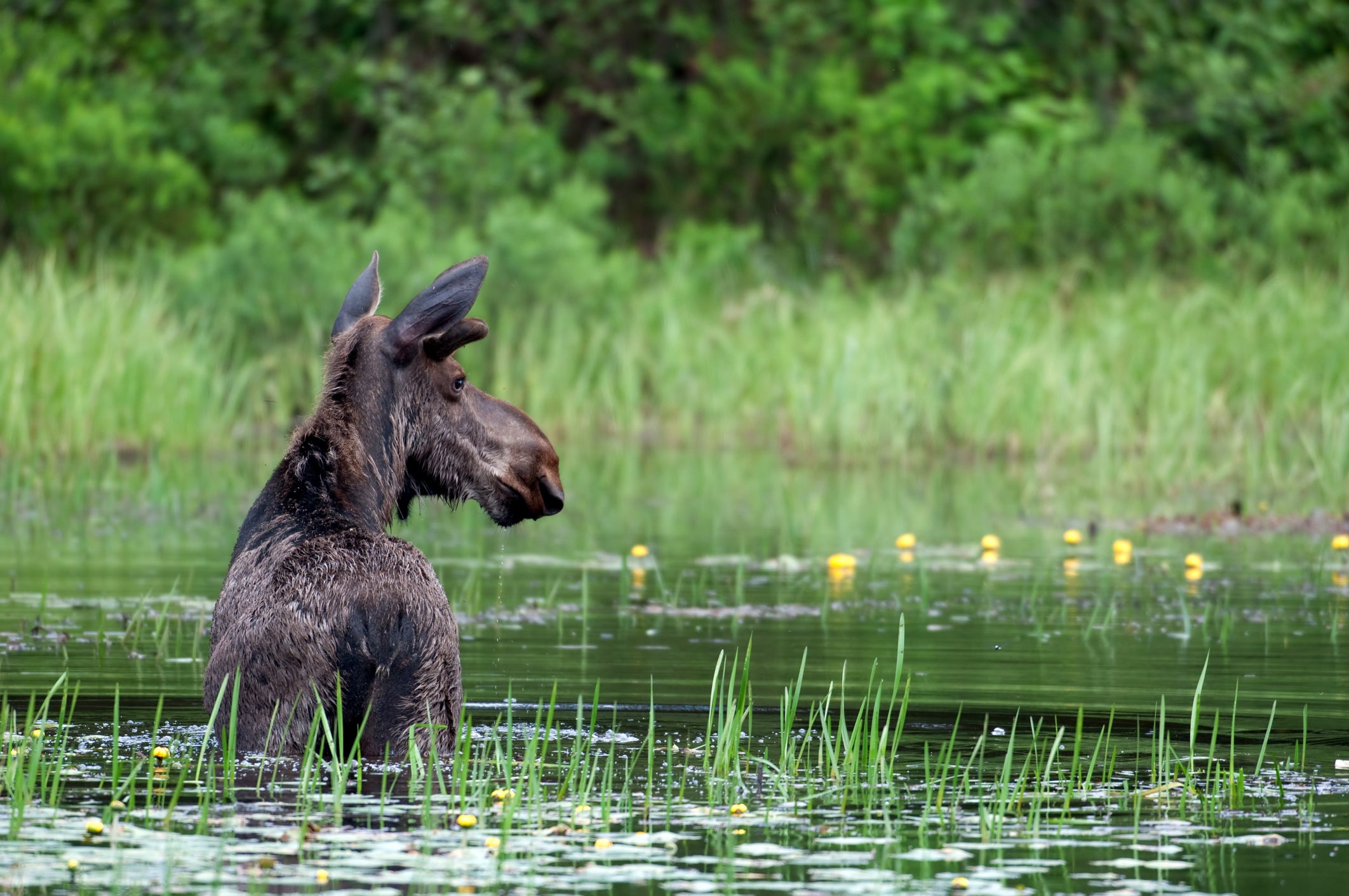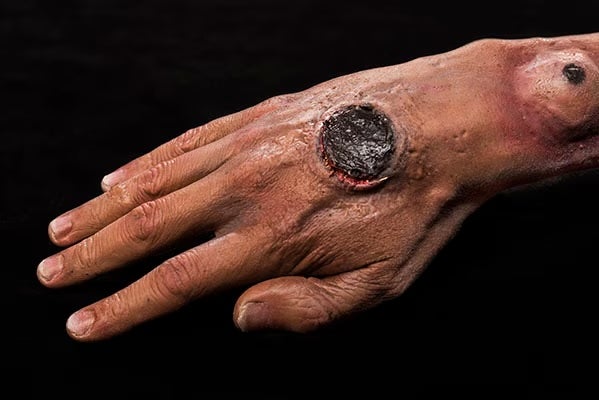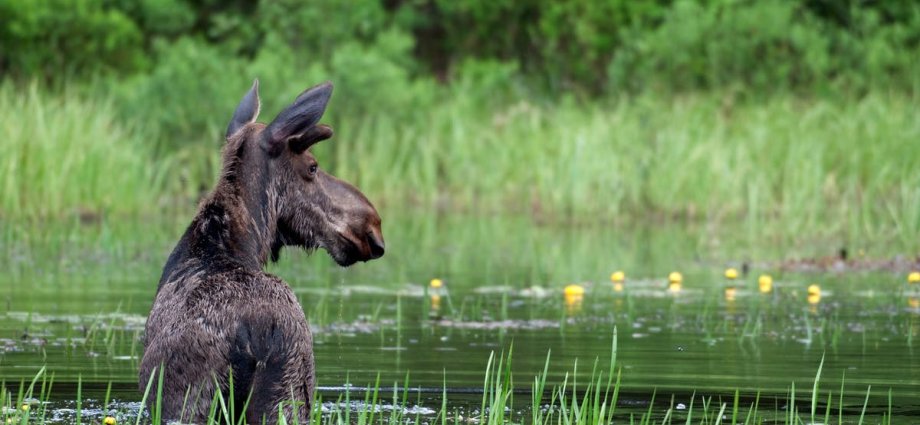Anthrax might be more commonly thought of as a bioterrorist weapon, bringing to mind white envelopes and government buildings. But Wyoming officials warned residents on Wednesday that there’s an outbreak of the disease tied to animals in Carbon County, where anthrax was confirmed in a moose and dozens of cattle that were recently found dead.
The Wyoming Game and Fish Department said that, so far, the moose is the only wild animal with a documented case of anthrax in this outbreak. The last confirmed case in the wild was in Sublette County — located some four hours away — in 1956.
In a separate announcement, the Wyoming Livestock Board said that these cases of anthrax — which were found in beef herds near Wyoming’s Elk Mountain — are the first since the 1970s. The diagnosis was confirmed by the Wyoming State Veterinary Laboratory last month.
Wyoming State Veterinarian Dr. Hallie Hasel told Cowboy State Daily on Wednesday that approximately 50 to 60 cattle died after becoming infected – with more potential losses that authorities aren’t aware of yet.

“Multiple state agencies and private veterinarians responded quickly following the anthrax diagnosis by the Wyoming State Veterinary Laboratory. Protecting animal and human health is critical upon diagnosis of a zoonotic disease,” Hasel said in a statement provided by the Wyoming Livestock Board.
How is it transmitted?
Anthrax is a bacterial disease that is caused by Bacillus anthracis bacteria. It can infect animals when they breathe in or ingest spores in contaminated soil, plants, or water. The bacteria may live in the soil for decades, and result in outbreaks which usually occur after periods of drought followed by heavy rainfall.
Anthrax can be transmitted between livestock, wildlife, and humans. Humans can be infected when they are exposed to infected tissue or animals, and when anthrax spores are used as a bioterrorist weapon. Before the September 11, 2001, terror attacks, the Wyoming Department of Health said anthrax largely occurred in workers that process animal hides, hair, bone, and wool. However, as a bioterrorist agent, it has been sent in the form of powder in mail envelopes.
What are the symptoms?
Early signs of anthrax infection in wildlife include trouble breathing and disorientation. After they die, infected animals bloat quickly and there may be black, tarry blood coming out of their noses, mouths, or anuses. Carnivores are at lower risk of infection, the Game and Fish Department said.
Symptoms in humans usually begin between one day to one week after exposure, but it may take as many as 60 days for them to present in humans. Symptoms depend on how anthrax enters the body. When it is spread through a cut or scratch on the skin, people may experience small blisters or bumps that itch, an ulcer with a black center after the bumps, and swelling around the sore on their face, neck, arms, or hands.

After breathing in bacteria spores, people may develop fever chills, shortness of breath, dizziness or confusion, nausea or vomiting, headache, sweats, extreme fatigue, and body aches. Some people may contract anthrax by eating meat that is infected, and experience swelling of the neck or glands, sore throat, nausea, vomiting, diarrhea, headache, flushing and red eyes, stomach pain and swelling, and fainting. Lastly, infection by injection has been identified in northern Europe, but such a case has never been reported in the U.S.
How is it treated?
Individuals who have potentially been exposed through direct contact, by contaminated items, and by air that may contain spores, are given antibiotics to prevent an infection.
There is a vaccine for anthrax that protects against the disease, but it is only recommended for use in certain groups of people aged 18 to 65 years old. Those groups include military personnel deployed to high-risk areas, and people exposed to an intentional release. In addition, the vaccine is recommended for people who are in direct contact with the bacteria, potentially infected products in high-incidence areas, and hides and furs with exposure to spores.
All types of anthrax can cause death if they’re not treated with antibiotics — but cases in the U.S. are incredibly rare. There have been around two cases in humans recorded annually for the past three decades, according to the Occupational Safety and Health Administration.
What can you do to avoid it?
Wyoming officials are working to reduce spread and limit human exposure to anthrax by giving specific instructions for carcass disposal and vaccination.
“Anthrax vaccine is approved for multiple livestock species and highly effective,” said Hasel.
The Wyoming Game and Fish Department has also advised that hunters take precautionary measures to reduce the risk of exposure. Those measures include avoiding handling or moving dead cattle or wildlife, not harvesting sick-looking animals, wearing gloves, not picking up roadkill or fresh deadheads in the Elk Mountain area, and keeping dogs, horses, and pets away from animal carcasses.
Should hunters encounter dead wildlife, they are asked to take a GPS pin or note the location and report it to the department.
Those who believe they may have come into contact with an anthrax-infected animal, are asked to reach out to the Wyoming Department of Health and seek medical attention.











